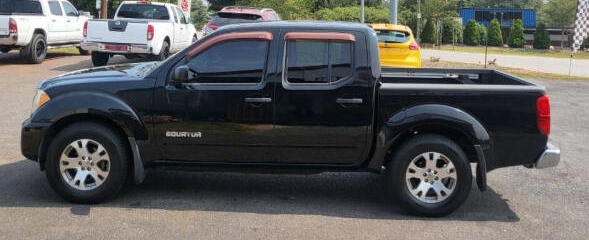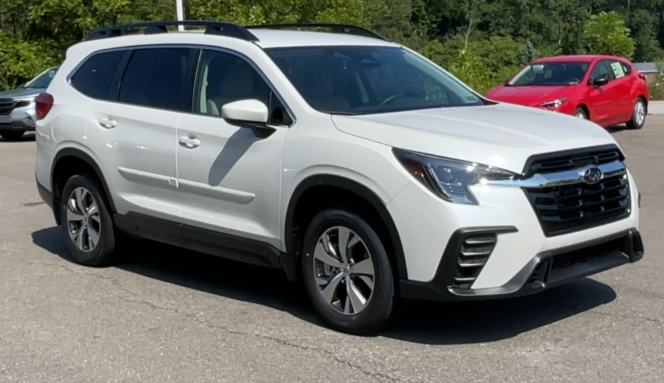The Evolution of the Suzuki Equator
The Suzuki Equator is a mid-size pickup truck that marked Suzuki’s foray into the North American light truck market. Introduced in the mid-2000s, the Equator was designed to compete with other mid-size pickups, offering a combination of utility, affordability, and Suzuki’s reputation for reliable vehicles. This article chronicles the development, models, and trim levels of the Suzuki Equator from its inception to its discontinuation, providing a comprehensive overview of its evolution over the years.
Introduction and Background
Suzuki, a Japanese automaker renowned for its compact cars, motorcycles, and all-terrain vehicles, ventured into the pickup truck segment in the mid-2000s with the Equator. The vehicle was essentially a rebadged version of the Nissan Frontier (also known as the Nissan Navara in some markets), built at Nissan’s manufacturing plants in the United States.
The Suzuki Equator was introduced primarily for the North American market, aiming to provide a smaller, more fuel-efficient alternative to full-size pickups. It was based on Nissan’s well-established platform, ensuring reliability and performance, while Suzuki aimed to capitalize on the growing popularity of mid-size trucks.
Production Years and Market Presence
Production Period:
- 2009 to 2012
The Suzuki Equator was produced from 2009 until 2012, with sales concentrated in the United States and Canada. Suzuki’s decision to cease production of the Equator after 2012 was part of a broader withdrawal from the North American light truck market, driven by declining sales and strategic shifts within the company.
Despite its relatively brief production run, the Equator is notable for its role as Suzuki’s sole pickup truck offering in North America during this period.
Model Introduction and Launch
The 2009 model year marked the debut of the Suzuki Equator. It was launched as a 2009 model for the 2009-2012 lineup, designed to fill the gap in Suzuki’s vehicle lineup and appeal to customers seeking a versatile mid-size pickup.
The initial lineup was relatively straightforward, consisting of a single cab and crew cab configurations, with multiple trim levels to cater to different customer preferences.
Trim Levels and Configurations
The Suzuki Equator was offered in several trims throughout its production, each varying in features, equipment, and price. The main trim levels included:
1. Base
- Features: Manual windows and locks, vinyl flooring, basic audio system, and no additional luxury features.
- Target Market: Budget-conscious buyers seeking a functional work truck.
2. SR5
- Features: Upgraded interior with cloth seats, power windows and locks, improved audio system, and exterior styling enhancements such as body-colored bumpers.
- Target Market: Buyers seeking a balance between affordability and comfort.
3. Off-Road
- Features: All features of SR5 plus off-road-oriented equipment such as skid plates, off-road tires, and upgraded suspension.
- Target Market: Enthusiasts interested in off-road capabilities.
4. Premium / Limited
- Features: Leather upholstery, upgraded audio and navigation systems, power-adjustable seats, and additional convenience features.
- Target Market: Customers looking for a more luxurious mid-size pickup.
Powertrain and Performance Options
Engine Options:
- The Equator was equipped with a single engine choice throughout its production: a 4.0-liter V6 engine.
- Power Output: Approximately 261 horsepower and 281 lb-ft of torque.
- Transmission: A five-speed manual was standard on lower trims, with a five-speed automatic available on higher trims.
- Drive Configuration: Offered in rear-wheel drive (RWD) and four-wheel drive (4WD) configurations, catering to different usage needs.
Performance and Capabilities:
- The Equator’s towing capacity ranged up to approximately 6,500 pounds, making it suitable for light hauling and recreational towing.
- Its payload capacity was around 1,500 pounds, aligning with typical mid-size trucks of its class.
Notable Features and Updates During Production
While the Suzuki Equator maintained a largely consistent platform throughout its brief lifespan, several updates and feature enhancements were introduced:
- 2010 Model Year:
- Introduction of Bluetooth connectivity and improved audio systems.
- Minor exterior styling tweaks, including new wheel designs.
- The addition of stability control and trailer sway control as optional features.
- 2011 Model Year:
- Introduction of a new trim level: Premium, offering leather seats and more upscale features.
- Enhanced safety features, including standard side curtain airbags.
- Refinements to suspension tuning to improve ride quality.
- 2012 Model Year:
- Limited changes, primarily focused on addressing minor bugs and improving overall reliability.
- The model was nearing the end of its production cycle, with sales declining due to increased competition and Suzuki’s strategic repositioning.
Discontinuation and Legacy
End of Production:
Suzuki officially discontinued the Equator after the 2012 model year. Several factors contributed to this decision:
- Declining sales figures and market share.
- Strategic shift by Suzuki to focus on small cars and SUVs rather than pickup trucks.
- Competition from established brands with broader dealer networks and more extensive product lines.
Legacy and Impact:
Though it had a relatively short production run, the Suzuki Equator remains notable for being Suzuki’s only pickup truck in North America during its time. It offered a practical, reliable, and affordable alternative in the mid-size truck segment, especially appealing to Suzuki enthusiasts and those seeking a compact yet capable utility vehicle.
The Equator’s rebadged Nissan platform demonstrated Suzuki’s adaptability in leveraging existing automotive architectures to expand its lineup. Its design and features were comparable to other mid-size trucks of the era, though it never achieved significant market penetration.
Aftermath and Market Aftermath
Following the discontinuation of the Equator, Suzuki did not return to the pickup truck segment in North America. The company refocused on its core strengths, including small cars like the Suzuki Swift and subcompact vehicles, as well as SUVs like the Suzuki Vitara and Grand Vitara.
In recent years, Suzuki has concentrated on markets outside North America, maintaining a global presence with a focus on motorcycles, small cars, and all-terrain vehicles.
.
We LOVE cars & cruising around, but sometimes day trips to explore new cities are required (with family or friends) for a spice of variety in your life!
So GO explore!
Cruises & Day/Night City Tours to: Baltimore, Boston, Chicago, Marina Del Ray, New York, Niagara, Philadelphia, San Diego, San Francisco, Toronto, Washington DC, etc.:

.
Summary
The Suzuki Equator’s evolution from its launch in 2009 to its discontinuation in 2012 encapsulates a brief but notable chapter in Suzuki’s history. It was built on Nissan’s platform, aimed at offering an affordable and practical mid-size pickup, and was available in multiple trims to cater to diverse customer needs.
Throughout its production, the Equator saw incremental updates, primarily in features and safety equipment, but maintained a consistent engine offering. Its trims ranged from basic work trucks to more luxurious versions, with optional four-wheel-drive configurations for enhanced versatility.
While it did not achieve long-term success in a highly competitive segment, the Equator remains a testament to Suzuki’s adaptability and willingness to diversify its vehicle lineup, even if only for a limited period.
Conclusion
The Suzuki Equator’s brief lifespan reflects the challenges faced by smaller automakers in competing with established pickup truck brands. Despite its limited production run, the Equator provided a capable, reliable option for consumers seeking a mid-size truck with Suzuki’s trademark reliability. Its evolution over the years—marked by incremental feature improvements and trim variations—illustrates the manufacturer’s efforts to meet market demands.
Today, the Equator is remembered as Suzuki’s only North American pickup, representing a unique chapter in the company’s history of global vehicle manufacturing. Its legacy persists among enthusiasts and Suzuki fans who appreciated its practicality and value during its brief tenure.
Note: Since the Suzuki Equator was produced over a relatively short period with limited model variations, detailed specifications and features may vary by year and market.







